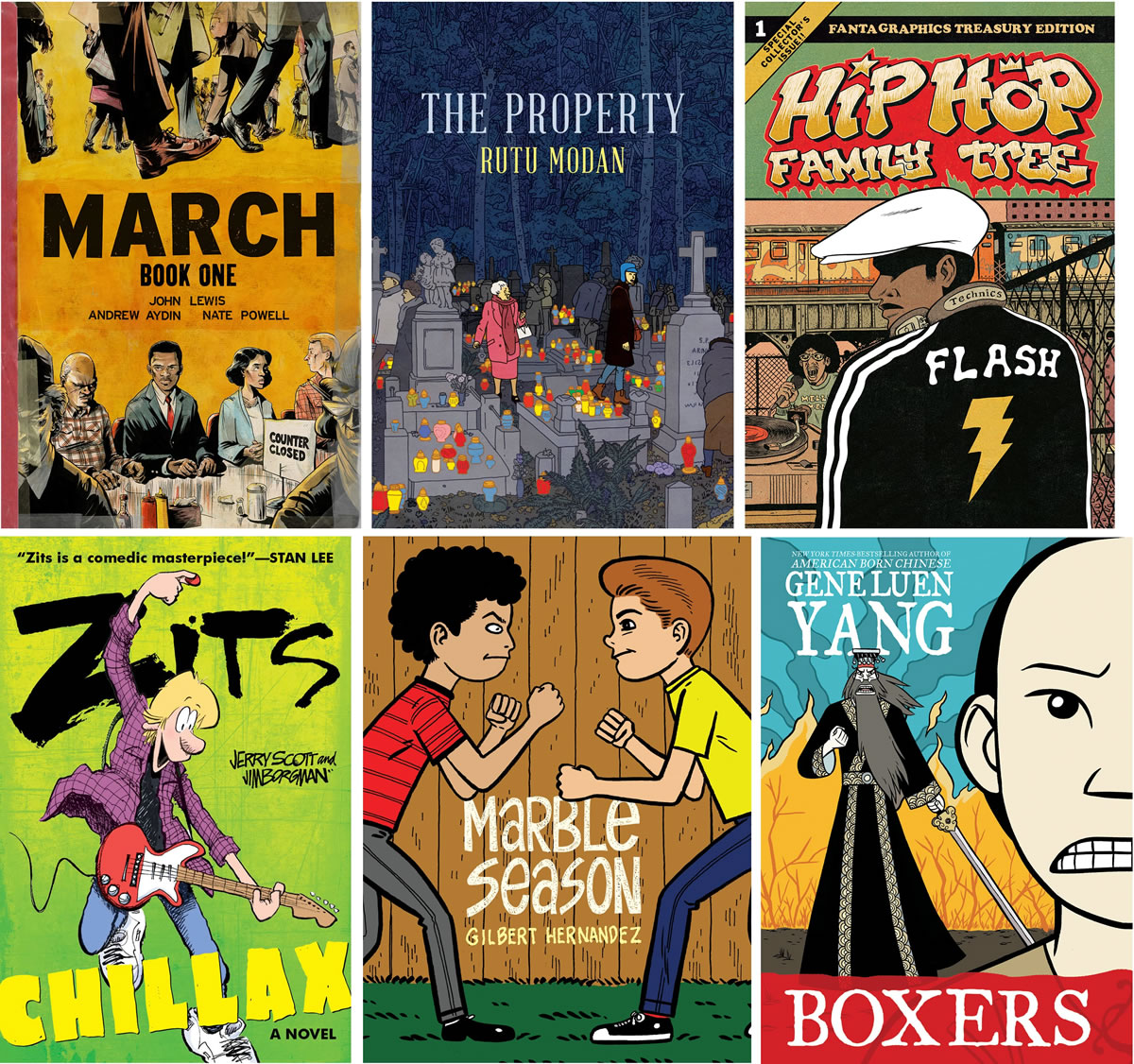“Boxers & Saints” by Gene Luen Yang
“The Freddie Stories” by Lynda Barry
“Hip Hop Family Tree” by Ed Piskor
“The Great War” by Joe Sacco
“The Property” by Rutu Modan
“Marble Season” by Gilbert Hernandez
“Battling Boy” by Paul Pope
“Woman Rebel: The Margaret Sanger Story” by Peter Bagge
“Zits: Chillax” by Jerry Scott and Jim Borgman
A young girl, a primary grade-schooler with a well-worn library card, was enthusiastically reading a riveting memoir when a stern tone descended upon her. “What is that?” the teacher asked/accused.
“It’s a graphic novel,” came the girl’s reply.
Such works, the girl was told, were unacceptable for classroom “reading time,” let alone for a book report. The teacher’s sharp ruling boiled down to a four-word excuse for banishment:
“Graphic. Novels. Aren’t. Books.”
Sigh.
Here we go again.
Two decades after Art Spiegelman’s landmark Holocaust graphic novel “Maus” won the Pulitzer Prize and helped stake a fresh claim for comics as literature — paving the way for the appreciation of such works as “Persepolis” and “Blankets” and “American Born Chinese” — do a significant number of teachers and administrators remain mired in such backward thinking? Yes.
As we step into 2014, this lingering bias in curriculum needs to cease. We urge the least enlightened of our educators to catch up with the rest of the class. And to make our case, let us present Exhibit A:



